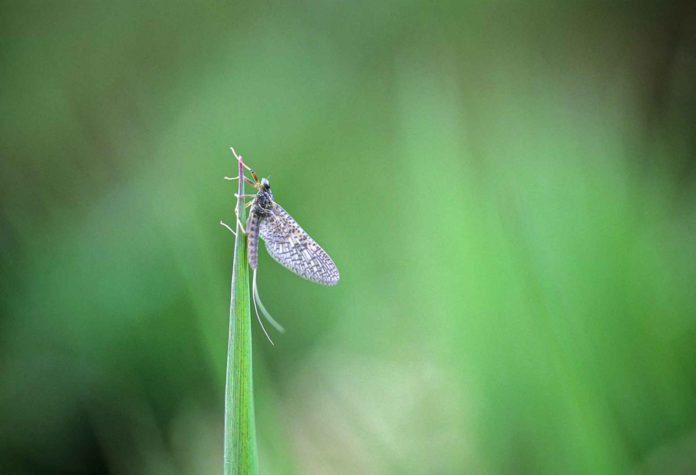Insects are the root of flyfishing. Without them, there is no basis for our sport. This fact alone is justification enough—to my way of thinking, at least—for possessing a working knowledge of insects and their behavior. Practically speaking, a knowledge of insects helps us predict where and when the best fishing is likely to occur, greatly increases our chances of finding feeding fish when we do get on the water, and informs our choice of fly pattern in any given situation. Personally, I think entomology is such an important aspect of the sport that I never go fishing anywhere, ever, without giving the local insects due consideration in advance.
But I also understand that for many reasons—time, energy, perceived complexity, other interests—many of us bypass learning the intricacies of insect identification, habits and behavior. For those anglers, I thought it might be helpful to put together a brief list of some important characteristics of the major insect groups. I daresay that if you never learn much beyond what’s on this list, you’ll still be in pretty good standing to take advantage of the opportunities the major groups of insects provide.
Mayflies
—There are a great number of mayfly species and they can be extremely abundant in any given water. Taken together, the various species have long seasonal emergence spans; in most parts of the country, you can find mayflies hatching from early spring through late fall.
—Mayflies are widely available to trout as nymphs, emergers, duns and spinners (not every phase is equally important in every species). Mayfly duns typically ride the water for a period of time after emerging, providing great feeding opportunities for the trout.
—Mayflies generally emerge at the most pleasant time of the day for the season. Think early to mid-afternoon on a chilly April day, early morning and late evening on a hot July day.
—The most prolific mayfly emergences take place in overcast, cool, moist weather. Light rain and snow are perfect conditions for big hatches.
—Mayfly spinners fall best on warm, calm mornings and evenings. Spinners are practically never passed over as a meal by trout; they seem to relish them.
Caddisflies
—One of the favorite foods of trout. Given a choice between eating caddis and other types of insects, trout will most often choose caddis. Should you find yourself in a hatch of multiple kinds of flies, caddis included, start out by fishing a caddis pattern.
—Caddis are available to the trout as pupae, emergers, adults and egglaying adults.
—Caddis emergences can be notoriously difficult to recognize, because the adults do not linger on the water like mayfly duns. The two strongest clues to a caddis emergence are small fish leaping from the water, and fish rising with no apparent insects on the water.
—Egglaying activity is usually somewhat sporadic; only in a few species is it as concentrated as mayfly spinner falls. Mornings and evenings are the likely times.
The golden stonefly [Hesperoperla pacifica] (photo: John Juracek).
Stoneflies
—Stoneflies crawl out of the water to emerge, with the nymphs of many species migrating en masse to the shoreline before emerging. Fishing nymphs at such times can be an especially deadly tactic.
—Adult stoneflies are generally available to the trout only when they return to the river to lay their eggs. Egglaying flights typically take place in the afternoons and early evenings.
Midges
—Midges are extremely abundant in almost all trout streams and lakes. Midges can range in size from roughly #10 – #26, and come in all colors. Small species are more common than large.
—Trout like eating small insects like midges. Never be afraid of fishing tiny imitations.
—All phases of midges—pupae, emerger, adult—are fed upon avidly by trout.
Credit: Source link






























